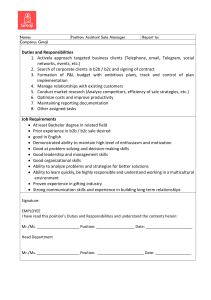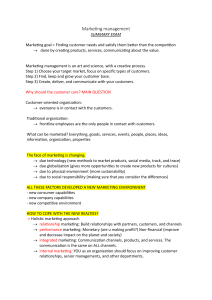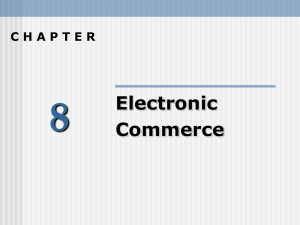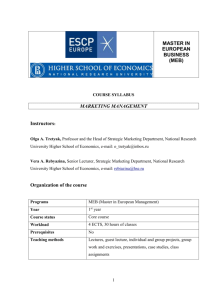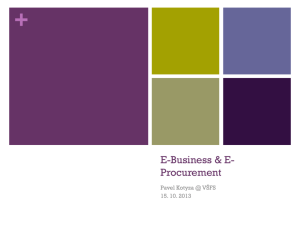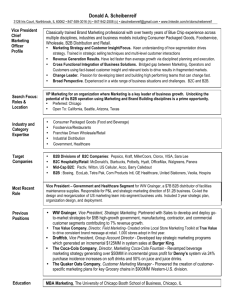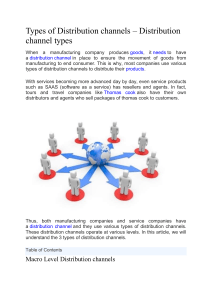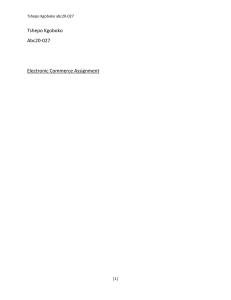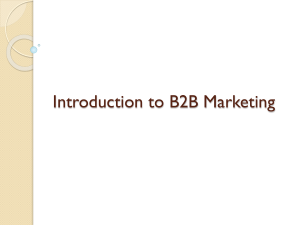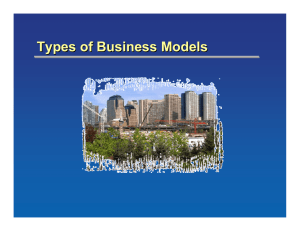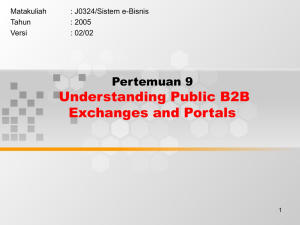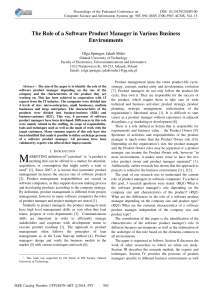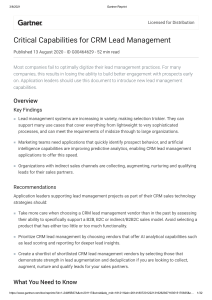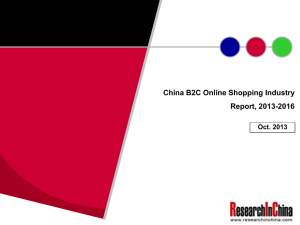WEEK 9 1. basic microeconomics – products produced in fully competitive markets,
advertisement
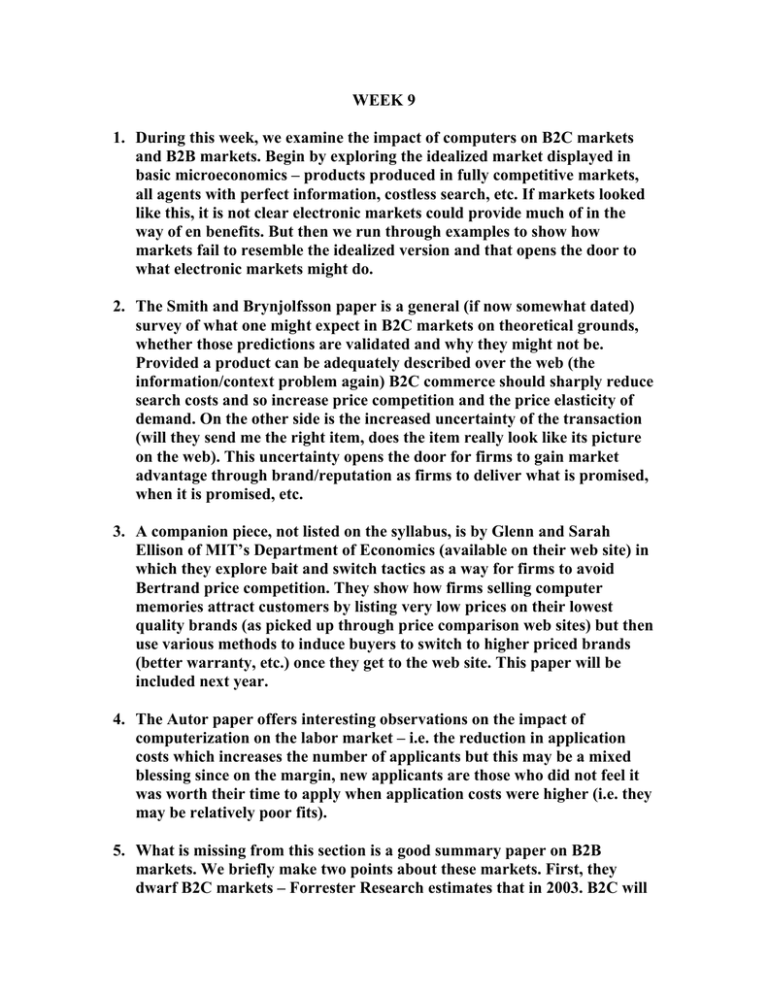
WEEK 9 1. During this week, we examine the impact of computers on B2C markets and B2B markets. Begin by exploring the idealized market displayed in basic microeconomics – products produced in fully competitive markets, all agents with perfect information, costless search, etc. If markets looked like this, it is not clear electronic markets could provide much of in the way of en benefits. But then we run through examples to show how markets fail to resemble the idealized version and that opens the door to what electronic markets might do. 2. The Smith and Brynjolfsson paper is a general (if now somewhat dated) survey of what one might expect in B2C markets on theoretical grounds, whether those predictions are validated and why they might not be. Provided a product can be adequately described over the web (the information/context problem again) B2C commerce should sharply reduce search costs and so increase price competition and the price elasticity of demand. On the other side is the increased uncertainty of the transaction (will they send me the right item, does the item really look like its picture on the web). This uncertainty opens the door for firms to gain market advantage through brand/reputation as firms to deliver what is promised, when it is promised, etc. 3. A companion piece, not listed on the syllabus, is by Glenn and Sarah Ellison of MIT’s Department of Economics (available on their web site) in which they explore bait and switch tactics as a way for firms to avoid Bertrand price competition. They show how firms selling computer memories attract customers by listing very low prices on their lowest quality brands (as picked up through price comparison web sites) but then use various methods to induce buyers to switch to higher priced brands (better warranty, etc.) once they get to the web site. This paper will be included next year. 4. The Autor paper offers interesting observations on the impact of computerization on the labor market – i.e. the reduction in application costs which increases the number of applicants but this may be a mixed blessing since on the margin, new applicants are those who did not feel it was worth their time to apply when application costs were higher (i.e. they may be relatively poor fits). 5. What is missing from this section is a good summary paper on B2B markets. We briefly make two points about these markets. First, they dwarf B2C markets – Forrester Research estimates that in 2003. B2C will total $95 B. in sales while B2B will total $2.4 Trillion in sales. (The B2B figure presumably includes goods that are sold and resold at different stages of production but this does not matter in describing the volume of transactions handled on exchanges). Second, because of the information/context problem, a B2B market cannot function without standards so that everybody understands exactly what is being bought and sold. How such exchanges rearrange markets depends on the nature of the market to begin with – the number and size of buyers versus sellers, etc.
